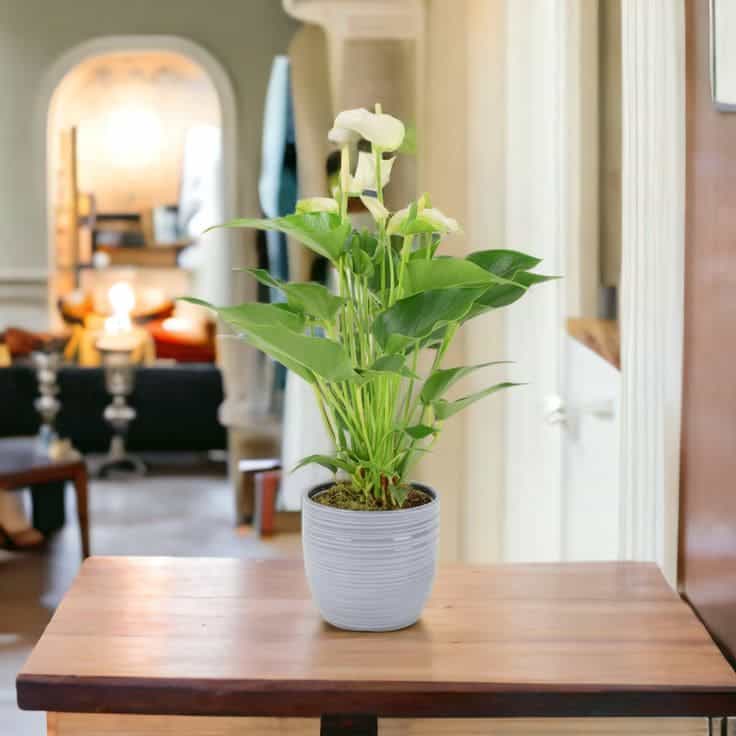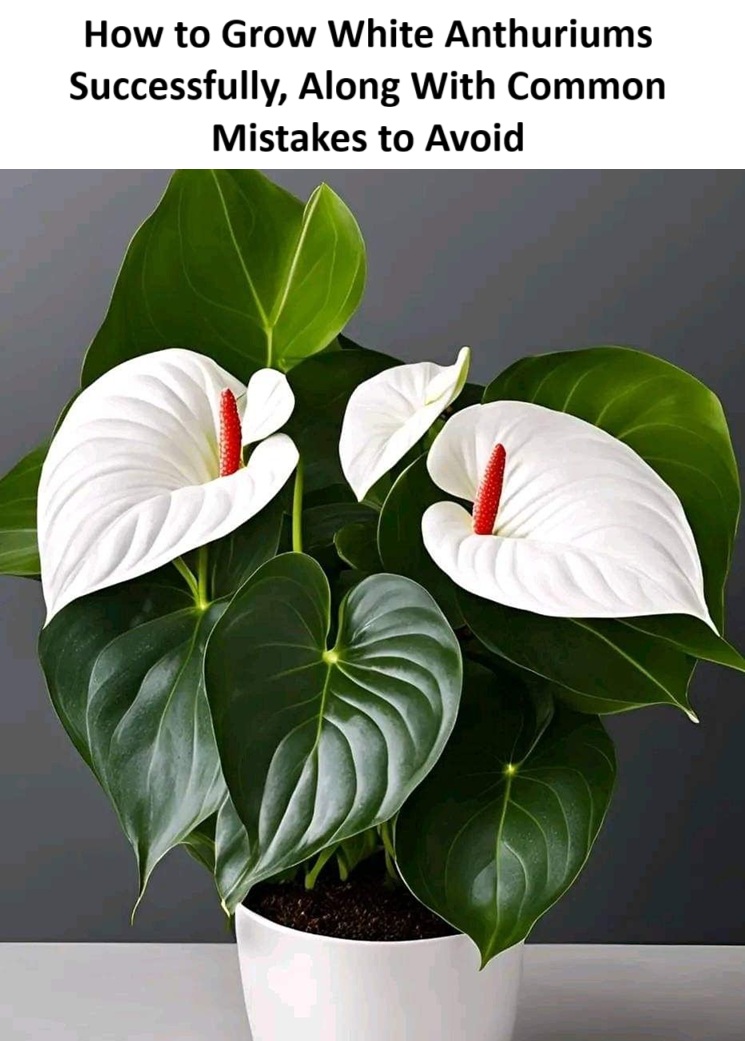White Anthuriums (Anthurium andraeanum) are one of the most elegant houseplants you can grow. Their glossy leaves and striking white spathes bring a sense of calm and sophistication to any room.
Over the years, I’ve learned how to nurture these beauties, and I want to share my experience so you can enjoy their grace without the frustration.
Let’s dive into everything you need to know about growing White Anthuriums successfully, along with common mistakes to avoid.
Creating the Perfect Environment for White Anthuriums
Light: Balancing Brightness and Shade
White Anthuriums need bright, indirect light to thrive. Place them in a well-lit room but out of direct sunlight.
Too much sun can scorch their leaves and fade their vibrant spathes, while too little light will limit their blooms.

East-facing windows are ideal, but if you only have south-facing windows, use sheer curtains to diffuse the light.
I’ve found that my Anthuriums bloom best when they get about 6–8 hours of bright, filtered light each day.
Temperature: Warmth Equals Growth
Maintaining a temperature between 65-80°F (18-27°C) is crucial for White Anthuriums. Sudden drops below 50°F (10°C) can cause leaf damage and stunt their growth.
I always make sure to keep mine away from cold drafts or air vents, as these plants dislike temperature fluctuations. If your home tends to get chilly in winter, consider using a heat mat to keep the soil warm.
Humidity: Mimicking the Tropics
These tropical plants thrive in humidity levels of 60-80%, which can be a challenge in dry indoor environments.

I keep a small humidifier near my Anthuriums or place the pots on trays filled with water and pebbles to maintain moisture.
Besides, misting the leaves a couple of times a week can help, but be careful not to soak them, as excess moisture can lead to fungal problems.
